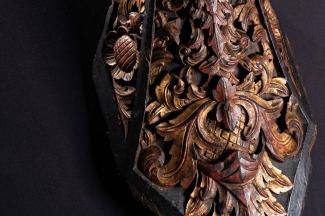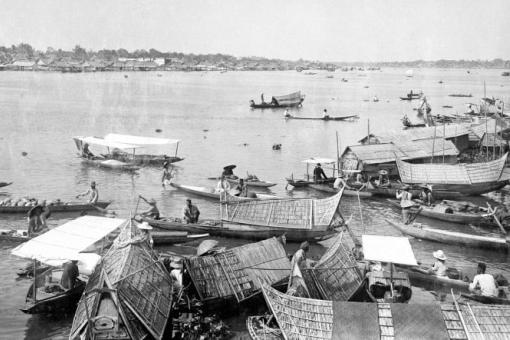This wave breaker comes from the former Sultanate of Palembang in central Sumatra, located along the Musi River. At 750 km, the river is the longest in Sumatra and was the heart of the maritime Srivijaya empire (7th-13th centuries). Over the centuries, boat technology developed as people traded and moved along this great river.
A royal symbol
This wave breaker is from a royal ship of Prince Natodirajo and dates from the 19th century. Floral patterns and lotus flowers are beautifully carved on the tembesu wood (Fagraea fragrans), which is famous for its strength and smoothness. Only the boats of kings, princes, and dignitaries of the Palembang Sultanate had wave breaker ornaments.
This wave breaker was previously in the collection of the Bari House Museum, a museum founded by the colonial government in 1933. In 1984 a new museum was built called Bala Putra Dewa Museum, and this object was held there until it was donated to the Palembang City Government.
Nyimas Ulfah Aryeni from the Museum Sultan Mahmud Badaruddin II in Palembang shares the significance of the wave breaker held in the museum’s collection.


